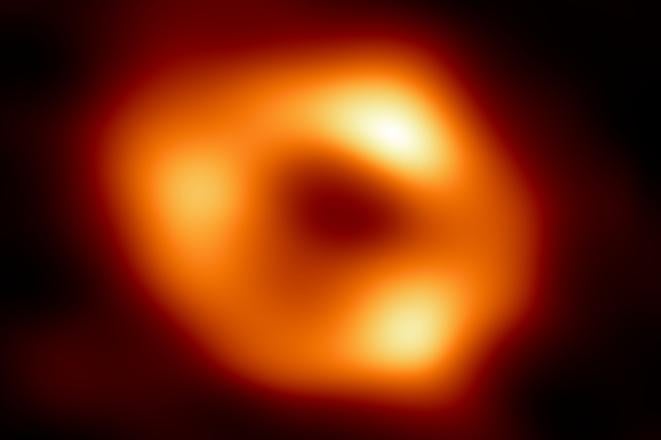For many years, scientists have suspected that there is a supermassive black hole at the centre of our galaxy, the Milky Way. The clearest evidence so far has been how gravity governed the paths of surrounding stars.
Now, astronomers have unveiled an image of the object known as Sagittarius A* (Sgr A*), giving the very first visual evidence of this phenomenon.
The new image, released on May 12, was created by the Event Horizon Telescope (EHT) Collaboration, a global research team of several hundred scientists that used a network of radio telescopes all over the world, essentially creating a telescope as big as our planet. Using this, they were able to peer through interstellar dust clouds and gather enough data to take the picture.

The black hole itself cannot be seen, as nothing can escape it, not even light. But glowing gas with bright spots around a dark central region is a telltale sign of its existence.
Visually, the picture is remarkably similar to the very first image of a black hole, released in 2019, at the centre of the distant Messier 87 galaxy. Thanks to the two images, astronomers can now study the differences between them and gain new insight about their features.
A time-lapse video spanning over 20 years shows stars orbiting the supermassive black hole that lies in the centre of the Milky Way.Credit: ESO/MPE
A difficult feat
Black holes are possibly the strangest consequence of general relativity - the theory published in 1915 by Albert Einstein that describes how everything in the universe is governed by gravity. However, not even Einstein himself believed that such an object could actually exist.



 The supermassive black hole in the centre of the Milky Way galaxy. (source: EHT Collaboration)
The supermassive black hole in the centre of the Milky Way galaxy. (source: EHT Collaboration)